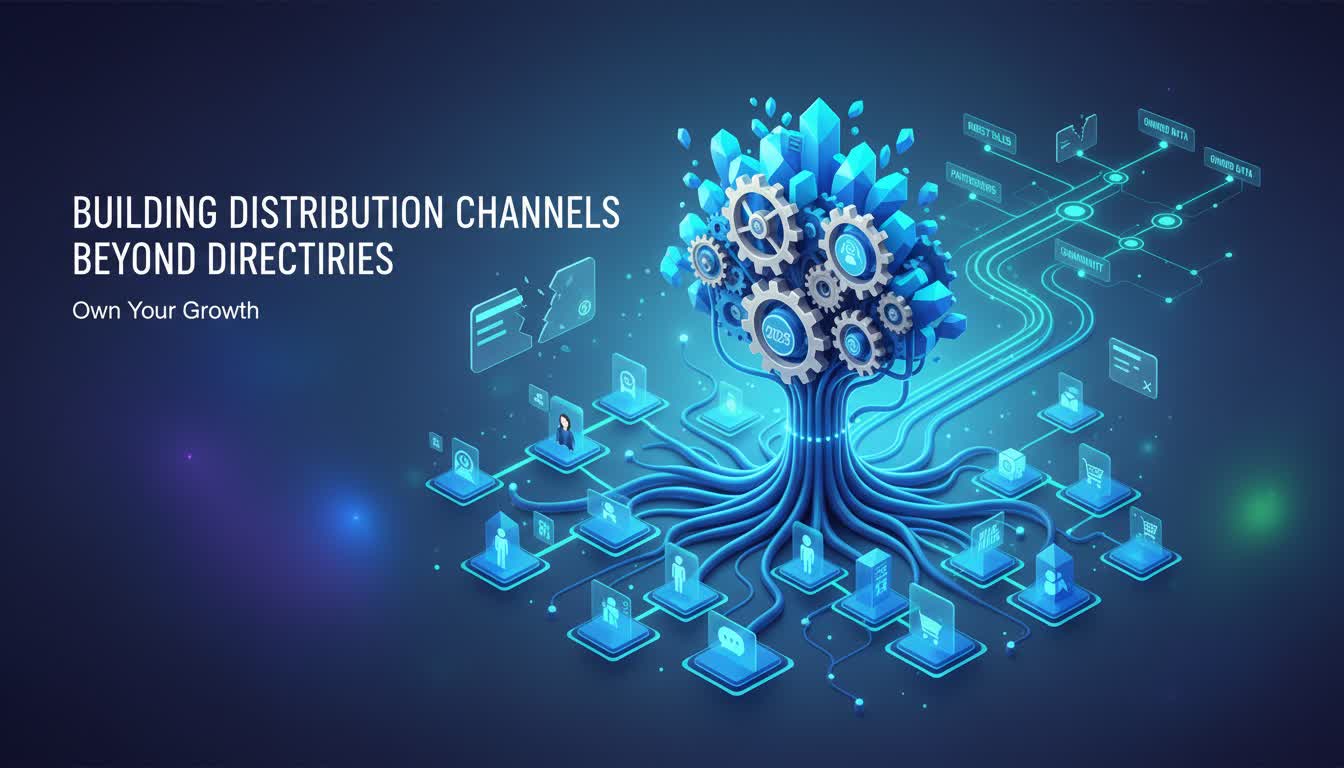
Building in Public: Turn Your Development Journey into a Growth Engine
Stop hiding your progress. Real frameworks for building in public that attract users, investors, and collaborators, with 60+ founder success stories and engagement data.
"Should I share my failures publicly?"
Most founders treat their development process like a state secret. They build in isolation, then wonder why nobody cares about their launch.
But the founders who build in public? They turn their development journey into a magnet for users, collaborators, and opportunities.
Here's how to transform your behind-the-scenes work into your biggest growth driver.
The Transparency Advantage
"Everyone will copy my ideas if I share them."
This fear keeps most founders silent. It's also why most fail to build momentum.
Truth: Sharing attracts collaborators. Hiding attracts competitors.
The Visibility Multiplier
Founders who build in public get 3x more inbound opportunities than those who don't, according to a 2024 founder transparency survey.
What to Share (And What to Keep Private)
Share freely:
- Technical challenges and solutions
- Feature development progress
- User feedback and insights
- Business decisions and reasoning
- Revenue/milestone celebrations
Keep strategic:
- Full roadmap details
- Competitive advantages
- Funding discussions
- Team conflicts
- Financial struggles
One founder shared their API design decisions publicly. They gained 15 contributors and 200 beta users before launch.
The Content Framework That Works
Not all updates are equal. Structure your sharing for maximum engagement.
Daily micro-updates (Twitter/Bluesky):
- Quick wins: "Just solved the notification bug! 🎉"
- Challenges: "Struggling with this database query..."
- Questions: "Best practices for handling user auth?"
Weekly deep dives (Blog/LinkedIn):
- Technical posts: "How we built real-time collaboration"
- Business insights: "Why we chose this pricing model"
- User stories: "How this feature changed everything"
Monthly milestones (Newsletter/All channels):
- Progress reports: "Month 3: From 0 to 100 users"
- Learnings: "3 biggest mistakes and what we learned"
- Previews: "Sneak peek at what's coming next"
Platform Strategy: Where to Build Your Audience
Start with one platform. Master it before expanding.
Twitter/X: Best for daily engagement and real-time conversations LinkedIn: Best for professional networking and B2B audiences Bluesky: Growing rapidly for authentic, tech-focused discussions Your blog: Best for long-form content and SEO
Pro tip: Cross-post your best content everywhere, but engage deeply in one primary community.
Turning Transparency into Revenue
"Building in public is just vanity metrics."
Wrong. It's a systematic growth strategy.
Monetization paths:
- Pre-sales: Share progress, offer early access discounts
- Consulting: Demonstrate expertise through technical posts
- Partnerships: Attract collaborators through shared challenges
- Investment: Show traction through transparent growth metrics
One founder documented their entire MVP build. By month 2, they had 500 followers and $15K in pre-launch revenue.
The Psychology of Authentic Sharing
People connect with real struggles. Perfect stories don't inspire. Relatable journeys do.
Authenticity multipliers:
- Admit mistakes: "That feature took 3x longer than expected"
- Share doubts: "Not sure if this direction is right..."
- Celebrate small wins: "First paying customer! (And it wasn't a friend)"
- Ask for help: "Anyone solved this scaling issue?"
Avoid: Bragging, false positivity, or hiding failures.
Building Community Through Transparency
Your audience becomes your biggest asset.
Community building tactics:
- Respond to every comment within 24 hours
- Create discussion threads around your challenges
- Highlight community contributions publicly
- Host AMAs when you hit milestones
- Share community feedback in product decisions
A developer built a community of 2,000 followers by sharing coding challenges. When they launched, 300 became paying customers.
Managing the Emotional Toll
Building in public isn't free. It requires vulnerability.
Self-care strategies:
- Set boundaries: Not every thought needs sharing
- Have support: Share privately with mentors first
- Take breaks: Schedule "offline" development time
- Focus on impact: Remember why you're sharing
Burnout signs: Forced positivity, avoiding tough topics, declining engagement.
Measuring Success Beyond Vanity Metrics
Track what actually matters.
True success indicators:
- Quality conversations: Meaningful discussions > generic likes
- Helpful contributions: Code contributions, bug reports, feature suggestions
- Business opportunities: Partnerships, investments, job offers
- User acquisition: Organic signups from your content
- Retention rates: Users who follow your journey become loyal customers
Vanity vs Value:
- Vanity: 10K followers, 100 likes per post
- Value: 1K engaged followers, 50 meaningful conversations, 20 business opportunities
When Building in Public Goes Wrong
Red flags to avoid:
Over-sharing: Dumping every detail without curation Negativity spiral: Focusing only on problems without solutions Inconsistency: Starting strong, then disappearing Sales pitch: Every post feels like a promotion Perfectionism: Waiting for "perfect" content
Recovery: Reset with an honest post about your hiatus and renewed commitment.
The Long-Term Flywheel Effect
Building in public compounds over time.
Month 1-3: Build initial audience through consistent sharing Month 4-6: Audience growth accelerates through word-of-mouth Month 7-12: Community becomes your product development team Year 2+: Network effects create unstoppable momentum
One founder started with 50 followers. Three years later, their transparent journey attracted $2M in funding and 10K customers.
Getting Started: Your First 30 Days
Don't overthink it. Just start.
Week 1: Set up your platforms and share your current project status Week 2: Post daily about small wins and challenges Week 3: Engage with similar builders in your niche Week 4: Analyze what resonates and double down
Remember: Perfect content doesn't exist. Authentic, consistent sharing does.
Building in public isn't a marketing tactic. It's a philosophy that transforms how you build, who you build with, and how you grow.
The founders who embrace it don't just launch products. They build movements.
Ready to build your startup in public? Share your journey and connect with like-minded founders on Startup Listing.
